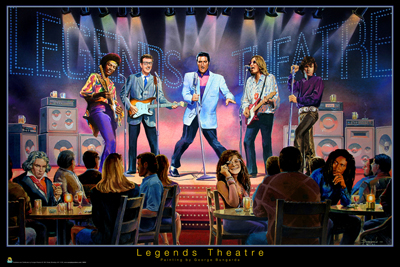Some of My Best Friends are Contemporary Composers
Continuing my comments on contemporary composers begun a few blogs ago, one could certainly write a book, or indeed fill several library shelves with books on the topic. Come to think of it, some people already have. Sometime around the 1970’s composers began to notice no one wanted to hear their music. Nonetheless, symphony orchestras and chamber ensembles have soldiered on, commisioning new works, hiring composers in residence, and occasionally reviving worthy compositions of the twentieth century, even trepidatiously adding a few to the canon. (Stravinsky, Bartok, Shostakovich, Prokofiev, and Britten come to mind, to name a few.)
One of the problems is that in 2012 we are now self-conscious about music history. This was not always the case. Bach may have revered and been influenced by his elder Buxtehude. Mozart and Beethoven realized that they had to be worthy of Bach and Haydn. And every composer since the early nineteenth century has strived to live up to the example of Beethoven. But until the twentieth century no composer challenged the notion that they were writing in the style of their time. We now can see that all great composers were somehow pushing the envelope; taking the style to a new level. With that perspective, the classical music intelligentsia has had trouble taking seriously any composer who simply writes pretty music, no matter how imaginative. John Rutter, anyone? Or even better, Morten Lauridsen? I like to think that I am open minded on this issue, but the fact is, when asked to name the greatest composers of the late twentieth and early twenty-first centuries, I cannot come up with a single name that is worthy to stand alongside the promenade of greats that came before: Josquin, Monteverdi, Bach, Haydn, Mozart, Beethoven, Schubert, Brahms, Wagner, Debussy, Stravinsky, Bartok, Shostakovich. The closest I can come are the minimilist composers, who did something new while still writing music that connects to an audience: Philip Glass, John Adams, Henryk Gorecki, and Arvo Part.
One of the most acclaimed living composers is American Eliott Carter. Last December, he celebrated his 103rd birthday, and amazingly he is still composing. Since he turned 100, he has written at least fourteen new works. Among his honors are two Pulitzer Prizes. It is a historic first for a composer of his stature to live to his age and still be composing. If Mozart had lived to be 103, he would have outlived Schumann and been alive the year Wagner completed “Tristan und Isolde”. In a perfect world, Eliott Carter would be the dean of American composers. Indeed, his new music received enthusiastic performances by the New York Philharmonic in honor of his 100th birthday three years ago. But Aaron Copland’s Americana ballets are still performed more frequently in symphony concerts on an annual basis than Mr. Carter’s entire output. I have the highest respect for him, and have found some of his dense, intellectual music fascinating, but I sincerely doubt that anyone will be performing his music in a hundred years. Audiences simply don’t like it. Even Bela Bartok, who is far more accessible, turns most listeners off.
The big change occurred a century ago with the invention of the phonograph record. Folk music had always existed from the days of the troubadours, as my colleague Mark Malinowski pointed out in a recent post, but for a folk song to survive beyond a generation, it had to be passed down to a younger singer who performed it in the style of a new generation. Although this was an oral tradition, published songs also circulated, which is why many of the songs of the troubadours have survived to the present day. Perhaps the most famous of these is “Greensleeves”, composed by an anonymous songwriter in the sixteenth century. But once performances could be recorded on a phonograph record and circulated to millions of listeners, Tin Pan Alley suddenly was outselling classical music. In the 1950’s, following the unprecedented boom in disposable teenage income, music enjoyed by teens became the best selling in the world, and rock and roll revolutionized popular music.
Consumption of recorded music has skyrocketed ever since. Perhaps it is sad that this has done away with family sing alongs around the parlor piano, but now it is not even necessary to be a musician to enjoy music. Over the past century, listeners have been given a clear alternative to what is performed in the concert hall, so cutting edge composers set themselves on a collision course with their intended audience. Atonality, extreme dissonance, elimination of anything resembling a melody in the name of “we can’t do what’s been done before” was bound to alienate listeners, who retreated to the beloved works of yesteryear.
Oh yes, there is much beautiful contemporary music, and the cross pollination of classical music with jazz and rock, not to mention world folk music, has brought in new audiences, and even changed concert venues from concert halls to clubs, art galleries, and lofts. Every now and then a surprise modern hit tops the classical charts, like Henryk Gorecki’s Symphony of Sorrowful Songs in the 1990’s. David Zinman and the Baltimore Symphony reached out to younger tastes in 1994 with their popular Dance Mix concert of rock influenced classical music. But at the end of the day, not even Gorecki and Dance Mix have found their way on to concert play lists. Symphony halls still predominantly resound with the music of dead white men.
And now that the dust has settled, that’s where classical music radio finds itself too. Some of my best friends are contemporary composers, but I almost never play their music on the radio.
Tags:classical music audiences, classical music crossover, Eliott Carter, great composers, modern classical music, pop music





